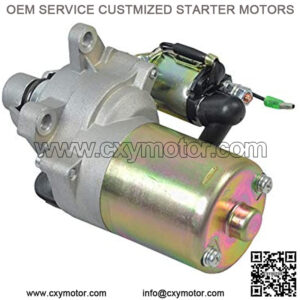Here are some common FAQs on testing a starter motor solenoid:
1. What Is A Starter Solenoid And How Does It Work?
The starter solenoid is an electrical device that works as a special type of electric relay. It forms part of the starter circuit and helps transmit electric current from the battery to the starter.
This device also works with the pinion gear. When you turn on the ignition key or press the starter button, the starter motor solenoid shifts the starter pinion gear to mesh it with the engine flywheel or flexplate.
But when your starter solenoid malfunctions, the starter pinion might not engage properly or the starter motor won’t receive enough power. And when you don’t have proper starter engagement, this might cause damage to the pinion gear or other critical engine components.
2. Why Is My Starter Solenoid Faulty?
Here are some possible reasons behind a bad starter solenoid:
Dead Battery, Loose Battery Cable, Or Corroded Battery Terminal
Whether you’re dealing with a tractor starter solenoid or a small lawn mower solenoid, you’ll need electric power. So, if you have a dead battery, a loose battery cable, or a corroded battery terminal, you likely end up with a faulty solenoid.
Faulty Wiring
Faulty connections in the control or starter circuit might cause a high electrical current to flow through the solenoid. This could cause excessive heat that would end up welding critical parts together and leaving you with a bad starter solenoid.
Worn-Out Wiring
If you’ve got worn-out wiring, this could lead to an inadequate current supply to the starter motor solenoid. This could leave you with a faulty solenoid or a bad starter motor.
Oil Leaks
If your car leaks oil, some of that oil could reach the starter solenoid and cause corrosion to its critical components — leaving you with a bad starter solenoid.
3. What Are The Signs Of A Faulty Starter Solenoid?
If you suspect that you have a faulty starter solenoid, there are several signs to look out for. Most of these will be similar to the signs of a faulty starter relay.
Here are the top warning signs you could look out for:
Engine Does Not Start
When you have a bad starter solenoid, the starter motor won’t work. This means the engine won’t start when you turn on the starter switch or press the start button.
However, if your vehicle has an automatic transmission, the engine could sometimes not crank because of the neutral safety switch.
The main function of the neutral safety switch is to ensure that your car can only start when the transmission is in park or neutral. So, if your engine won’t start, start by ensuring that your transmission isn’t in gear.
No Clicking Noise When Starting The Engine
The clicking noise you hear when you turn on the ignition switch comes either from the starter solenoid or the starter relay. So, if you don’t hear anything while starting your car, you could be dealing with a bad starter solenoid or a faulty starter relay.
4. What Is An Easy Way To Get My Starter Solenoid Replaced?
When the starter solenoid starts failing, you’ll usually need to get it replaced. This procedure requires special equipment, so you shouldn’t try to do it yourself.
Ideally, you should get hold of a mobile mechanic that’ll come to your home since you likely won’t be able to drive your car.
When searching for a mechanic, always ensure that they:
- Are ASE-certified
- Give a service warranty for all their repairs
- Use high-quality replacement parts and tools
About Starter Solenoid
“starter solenoid”
“starter solenoid wiring”
“starter motor solenoid”
“starter or solenoid bad”

